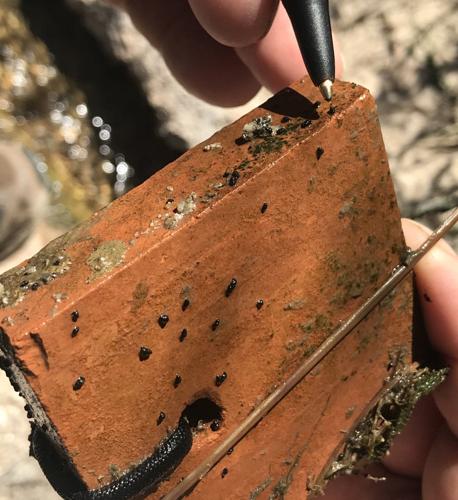A tiny snail found only in a desert oasis on the U.S.-Mexico border southwest of Tucson could be added to the endangered species list, under a proposal by the U.S. Fish and Wildlife Service.
On Tuesday, the agency announced plans to list the Quitobaquito tryonia due to declining flows in its namesake spring at Organ Pipe Cactus National Monument.
The move comes in response to more than 15 years of petitions and lawsuits from environmentalists seeking protections for the snail and hundreds of other species across the Southwest.
“I’m thrilled that these remarkable desert survivors are on their way to federal protection,” said Laiken Jordahl, Southwest conservation advocate at the Tucson-based Center for Biological Diversity. “These tiny, resilient springsnails don’t live anywhere else in the world, and they could be wiped out by groundwater pumping and future border-wall construction. To save them, we have to protect Quitobaquito Springs, a miraculous emerald jewel that’s really the entire universe for these mighty, miniature survivors.”
But the practical effect of the proposed listing is unclear. The tryonia’s entire habitat is already managed by the National Park Service, and the water that sustains it also supports two existing endangered species, the Sonoyta mud turtle and Quitobaquito pupfish.
According to experts, the black-shelled springsnail smaller than a sesame seed has lived in the narrow, spring-fed creek and pond at Quitobaquito since the last ice age at least.
It is one of about three dozen species of native mollusks throughout the state that are actively managed by the Arizona Game and Fish Department.

National Park Service intern Katie Biardi looks for native snails smaller than a sesame seed in the waters of Quitobaquito Springs during a population survey in 2019. The species known as Quitobaquito tryonia could soon be listed as endangered.
State wildlife officials declined to comment on the proposed listing, but they continue to work with their federal counterparts on a conservation plan aimed at protecting the snail and its habitat.
As part of that effort, a reserve population of about 150 snails has been established at the Arizona-Sonora Desert Museum.
Game and Fish considers the population of snails at Quitobaquito Springs to be stable, but that could change if spring flows continue to decline as they have for the past 30 years.
According to a Fish and Wildlife Service notice slated for publication in the Federal Register on Wednesday, the spring system is threatened by groundwater pumping, spring modification, ongoing drought and the “effects of climate change.”
The service is proposing to set aside approximately 1,000 feet of concrete-lined spring channel and a nearby seep as critical habitat for the snail — all of it in Pima County, about 170 miles from Tucson. The entire habitat designation covers just 6,095 square feet, an area small enough to fit inside the average Red Lobster restaurant.
“If this habitat dries up, that spells extinction for this vulnerable springsnail,” Jordahl said. “We hope the proposed protection of the Quitobaquito tryonia will spur urgent action to protect groundwater aquifers in this stunning corner of the Southwest.”
The Santa Fe, New Mexico-based environmental group Forest Guardians, now WildEarth Guardians, originally petitioned for the snail to be listed in 2007, along with 474 other species.
Two years later, the Fish and Wildlife Service determined that the Quitobaquito tryonia might warrant protection. No additional action was taken until 2020, when the Center for Biological Diversity sued the Trump administration for failing to make listing decisions for more than 200 species, including the snail.
Quitobaquito and the freshwater pond it flows into is also an important site to the Hia-Ced O’odham people and Tohono O’odham Nation.
The oasis lies within steps of the international boundary, and concerns for its future were amplified during border wall construction in 2020.
Construction crews are no longer sinking wells and pumping groundwater to support work on the barrier, but conservationists worry about the potential impacts of security lights that have been installed along the border wall but not yet activated.
According to Jordahl and company, those “stadium lights” could severely disrupt the lifecycle of the snails and other aquatic species clinging to life at Quitobaquito.
Get your morning recap of today's local news and read the full stories here: tucne.ws/morning






